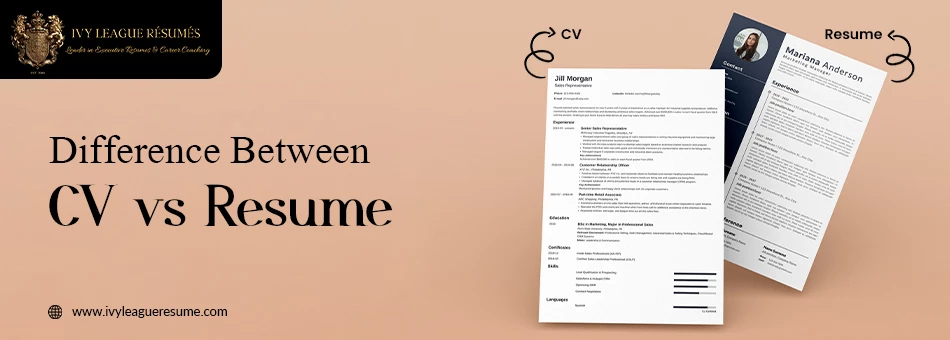In the professional world, the terms ‘resume’ and ‘curriculum vitae’ (CV) are often used interchangeably. While they both play pivotal roles in your job application, their structure, purpose, and application significantly differ. Understanding these variations and knowing when to use which can profoundly impact your job search success. In this comprehensive analysis, we delve into the distinguishing features of these two documents and provide guidance on their respective usage.
Fundamental Differences
A resume is a concise, typically one- to two-page document, showcasing your skills, experiences, and achievements relevant to the jobs you are applying. It’s tailored for each application, highlighting the most relevant qualifications. Resumes follow a flexible format, including sections such as a summary, work experience, education, and skills. The goal is to provide a snapshot of your career and demonstrate why you’re the right fit for the job.
On the other hand, a CV is a more detailed and comprehensive document, often stretching multiple pages. It provides an exhaustive chronicle of your academic and professional journey, including education, publications, awards, presentations, research, and any other significant accomplishments. Unlike a resume, a CV isn’t typically tailored for each job application and follows a chronological format.
Geographical Considerations
Geographical location plays a significant role in the resume vs. CV debate. In the United States and Canada, resumes are commonly used for most job applications, while CVs are primarily used when applying for positions in academia, research, or education. Conversely, in the UK, Ireland, mainland Europe, New Zealand, and Australia, the term ‘CV’ is used more broadly, encompassing both types of documents. However, an international CV, such as one for a role at an international organization or academic institution, might mirror the detailed nature of a U.S.-style CV.
When to Use a Resume vs. a CV
Understanding when to use a resume or a CV requires clear comprehension of job requirements and norms of the industry and geographical region.
1. Use a Resume When: Applying for roles in business, non-profit organizations, government, and public sectors in countries such as the U.S. and Canada. Resumes are also suited to positions requiring specific skills or experiences and when the application demands a succinct overview of your professional journey.
2. Use a CV When: Applying for roles in academia, research, or grant proposals, primarily in the U.S. or Canada. A CV is also necessary when applying for jobs in Europe, Africa, the Middle East, and Asia, where it’s the standard document expected by employers.
CV for Academia, Research, or Education
The unique nature of academia, research, and education careers necessitates the comprehensive detail and depth of a CV. In these fields, it’s often the breadth and depth of one’s scholarly contributions that differentiate one candidate from another. For instance, detailing all your publications, research, conference presentations, teaching experiences, academic services, and grants won paints a comprehensive picture of your academic prowess and potential value to an institution.
Further, these roles often demand specialized knowledge, unique skills, and rigorous qualifications, all of which are captured best through an extensive CV. The field of academia values a candidate’s progression, the depth of their research, and their contribution to knowledge, which often cannot be confined to the limits of a resume. Also, academic hiring committees often prefer exhaustive information over brevity, as it aids them in understanding a candidate’s complete academic journey, areas of expertise, and their potential for future contributions.
Resume for Corporate Positions
On the contrary, resumes are apt for corporate positions due to their focused, concise nature, prioritizing relevance over comprehensiveness. In the corporate world, hiring managers are often inundated with numerous applications for each position. Given their limited time, they tend to favor succinct, targeted documents that quickly highlight a candidate’s skills and achievements.
Resumes offer just that—a snapshot of your career achievements and transferable capabilities, tailored to the job requirements. They allow you to strategically present the most relevant aspects of your background, showcasing how you can add value to the company. This focus on customization not only makes your application more relevant but also easier for hiring managers to identify your fit for the position. In a highly competitive corporate job market, the resume’s brevity and relevance are its key strengths, making it the preferred choice for most non-academic applications.
Transitioning Between a CV and Resume
If you’re transitioning between academic and industry roles or navigating the international job market, you may need to convert your CV to a resume, or vice versa. Converting a CV into a resume involves condensing the information and tailoring it to highlight the skills and experiences most relevant to the job. On the other hand, converting a resume to a CV requires expanding on your academic or industry contributions and possibly including sections not typically found in a resume, such as publications, research, or speaking engagements.
Conclusion
In conclusion, the choice between a CV and resume depends on various factors, including the job, industry, and geographic norms. While the documents share the objective of landing you the job, they differ in length, detail, and customization. Therefore, knowing when to use which can play a pivotal role in aligning your application with the expectations of potential employers. Whether it’s a detailed CV that chronicles your comprehensive professional journey, or a succinct, targeted resume, choosing the right document can be the first step in opening the door to your next career opportunity.




